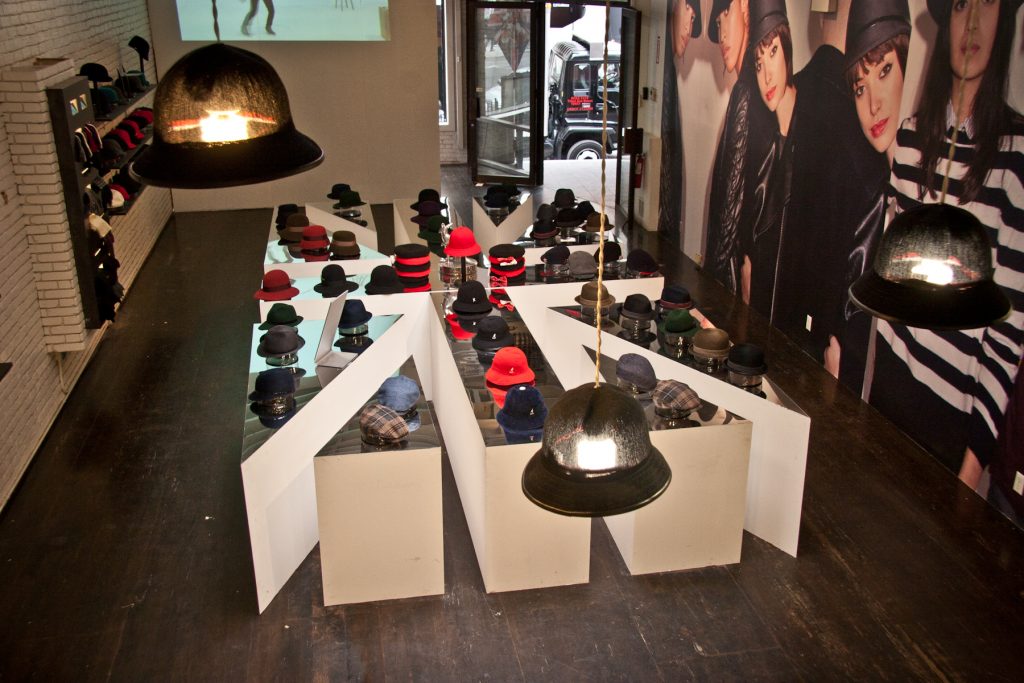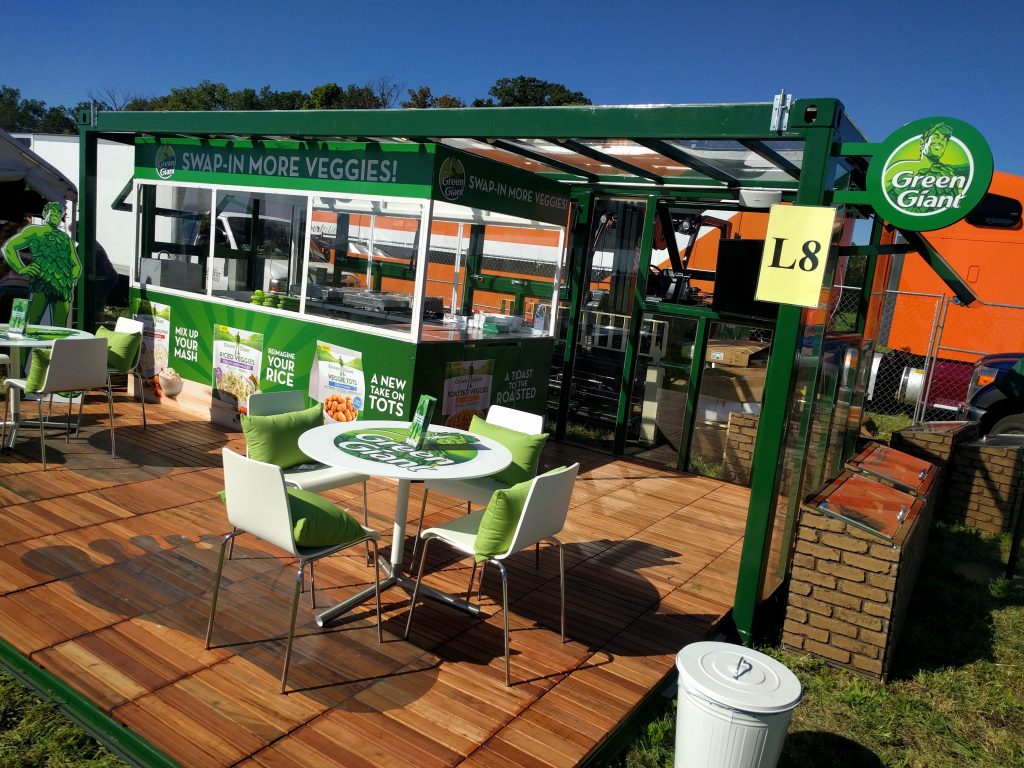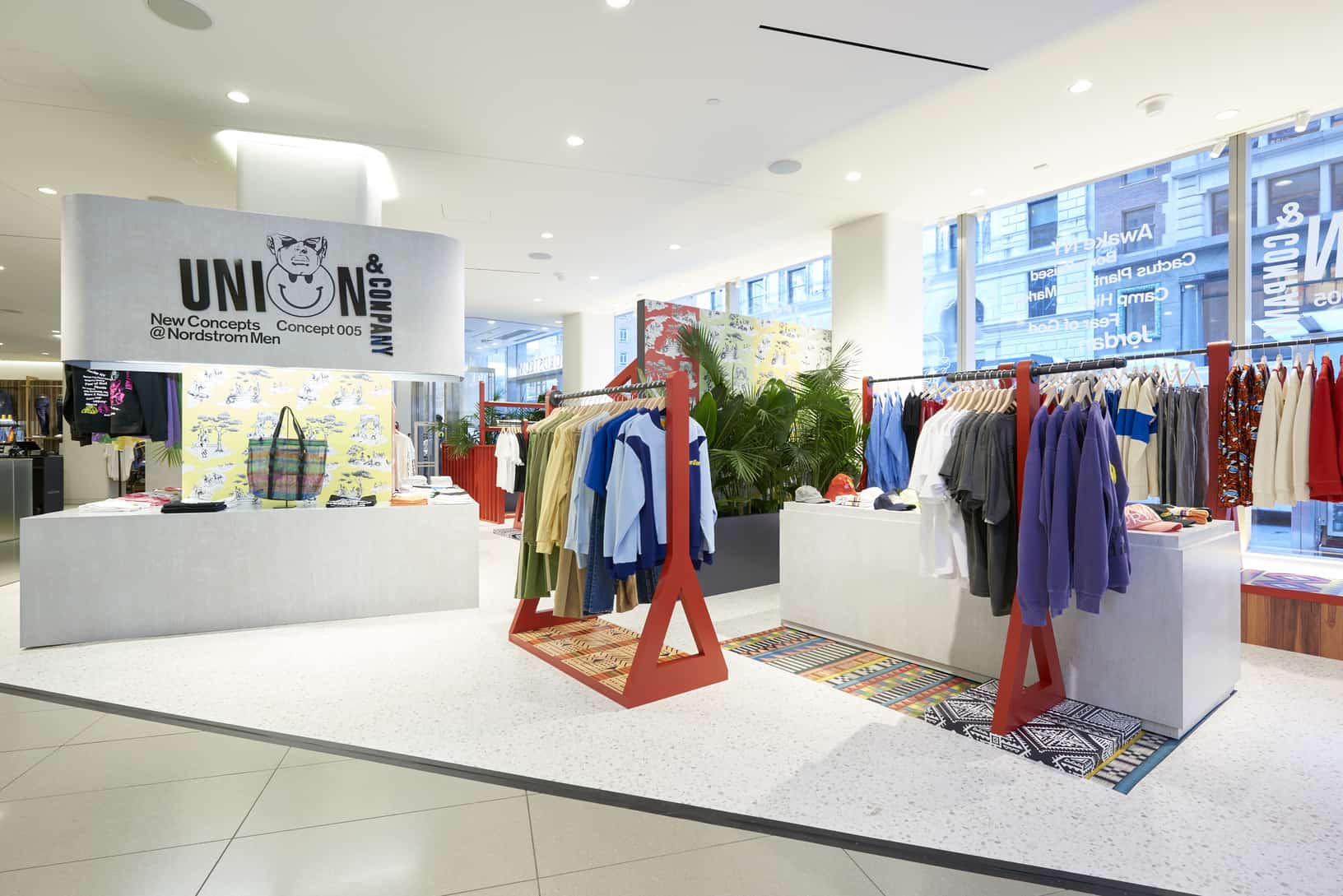WHY THE POP-UP SHOP SENSATION IS NOT A PASSING FANCY

Temporary retail is a fleeting concept that ironically isn’t fleeting at all. The idea of seasonal and rotating vendors, merchandise and marketplaces has existed since the first Viennese Christmas markets in the Middle Ages. Pop-up retail is its latest and ever-proliferating incarnation.
The L.A.-based company Vacant pioneered pop-up shops in 2003 as a rotating retail concept, i.e. apparel stores opening on a short-term basis and moving locations every few weeks. Comme des Garçons elevated the practice beginning in 2004, dubbing theirs “Guerrilla Shop,” and laid the tenets for future pop-ups—unique environments that engage and surprise. The industry has exploded since. In 2016, research firm RetailNext valued the pop-up retail sector at $50 billion. By 2018, Storefront, the pop-up rental space platform, predicted the industry would generate $80 billion.
Why launch a pop-up?
To build a customer base, for established and start-up, online-only and offline brands and retailers alike. A recent RetailMeNot study of in-store shopping habits revealed the average American visits up to three physical stores per week on a single shopping trip, millennial shoppers an average of four and Gen Z shoppers 5.25. Cotton Incorporated’s Lifestyle Monitor Survey found that 49 percent of all consumers say they are likely to purchase clothes from a store offering a pop-up shop featuring complementary brands. Males outpace females (48 vs. 43 percent) in likelihood. The same research showed that 57 percent of consumers under 35 years old are inclined to purchase from a store that offers pop-up shops. Expand your already existing customer base, from online into offline, into new demographic segments and new markets, while enhancing your email marketing lists and generating new sales leads.

Exclusivity and Uniqueness. Best guidance when strategizing a pop-up shop advises a narrow and deep product focus rather than a broad array of offerings. Product launches and exclusives, flash sales and select discounts are perfect for the platform, generating instant excitement with the added benefit of attracting a younger demographic. A 2018 research study from Cotton Incorporated’s Lifestyle Monitor indicated 57 percent of millennial males and 42 percent of millennial females were “very or somewhat likely” to feel more connected or loyal to clothing brands that offer exclusive product launch parties.
Personalization. Face-to-face customer interaction in a physical space, especially for online-only brands, promotes brand loyalty, creates a better customer experience and understanding and informs data insights. Pop-up shops offering product customization have added value. The Monitor survey shows that 70% of shoppers feel more loyal to brands and stores that customize.
Cost-Effective. Pop-up shops cost a fraction of what it takes to set up a permanent retail space, with fewer restrictions, risks, and commitments. The flexibility of short-term (think anywhere from three days to six months), temporary retail and the variety of approaches means a no- or low-inventory model is possible, even expected. The current abundance of retail real estate vacancies signifies a plethora of location options.
Brand Exposure and Buzz. The temporary nature of the pop-up incorporates the all-important sales tool of urgency. Couple that with the exclusivity factor tied into not only product launches and select discounts, but also secrecy of location or launch dates and you have increased brand buzz. In a 2018 survey by My Total Retail, nearly a third of the respondents viewed pop-ups as places they can score deals or hard-to-find items.
Showcase Your Products and Story. Pop-ups allow improved engagement with customers in product demonstrations and learning labs, enabling brands and retailers to discover customer pain points and their solutions. Create better connections with your customers by telling your brand story, establishing authenticity and credibility. A pop-up can bring your content alive in an environment that produces share-worthy images for social media.

Top Tips
Narrow Your Focus. Are you launching a product or product line? Are you offloading inventory? Are you tying into a seasonal or some other theme? Narrow your focus and go deep rather than broad.
Define Your Goals. Are you looking to increase brand exposure? Are you hoping to generate sales leads? Revenue? Press coverage? Are you testing a product? Refine your goals to one or some, and decide your key measurable value drivers.
Location, Staffing, and Logistics. Are you looking at expanding into another city? Do you need high foot traffic because you’re a new brand, or would a hidden location be more brand-right? Use online sales, social and research data to inform your decision. If you’re a new brand, you may want to keep your pop-up running longer, in which case you must consider refreshing your “content” regularly. If an established brand that wants to inspire urgency, make it a shorter run. Be certain to set a budget and stick to it. Create a beautiful-to-look-at, well-lit and well-staffed environment that shows off the brand, brand story, your services and offers a community space for customers to gather. How will traffic flow? Will you stock inventory? Are you handling purchases offline or online? Where is your demonstration area? Are you using digital technology for VR or in-store projection? Do you have branded Wi-Fi? More than just making a pretty picture, your pop-up should inspire a dynamic and emotional connection to the customer.
Promote Before, During and After. Use digital assets and platforms, email marketing, social media and websites to build anticipation before your pop-up launch, promote during its run and capture the experience in customer-personalized moments like an in-store photo booth and other images to market your brand after the pop-up is over.
Measure, Measure, Measure. What were your goals and key value drivers, and how did they track? Did your email blasts drive traffic? If you were selling a product, track how it sold and when. Did select discounts bring customers and drive sales? Gain social media followers? Did you generate sales leads?

The Future
Pop-up retail may be completing its second decade yet it’s just beginning to blossom, with brands and retailers at all price points jumping on board, including the luxury sector. Louis Vuitton has plans for 100 pop-ups in 2019, an increase from 80 in 2018, for example.
Store-within-a-store pop-up models are growing too. The Market @ Macy’s accepts juried brands for one upfront, all-inclusive fee, a pop-up shop managed and staffed by Macy’s who also provides data analytics. Nordstrom’s Pop-In@Nordstrom is an ongoing themed series of pop-up shops curated by Olivia Kim, Nordstrom’s VP of creative projects. Earlier this year, the men’s store launched New Concepts @NordstromMen, an editorial-meets-retail, sometimes concept-driven, sometimes merchandise-driven showcase of what’s next and what’s best in menswear, curated by Sam Lobban, VP of men’s fashion.
SHOWFIELDS, The Most Interesting Store In The World, launched last year in downtown NYC in a four-story building as a “magical stage of discovery” that marries curation, storytelling, experiential, wellness, art and lifestyle in a showcase of D2C brands. So Major is a monthly themed initiative of very short-term (three days per month) pop-ups with an emphasis on innovation and launches developed by Winston Retail, with Westfield malls as the launch phase’s venue partner.
When brands and retailers can consider storage container pop-ups on offer through companies like Vacant or take space in Miami’s Bubble City, it seems we’ve barely scratched the surface of the enormous potential of this fast-growing format.








